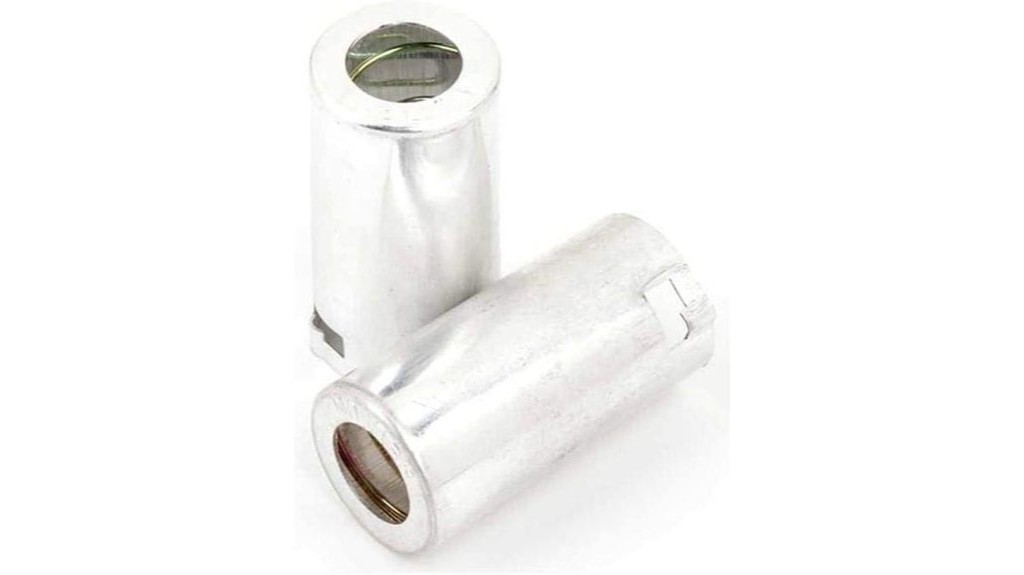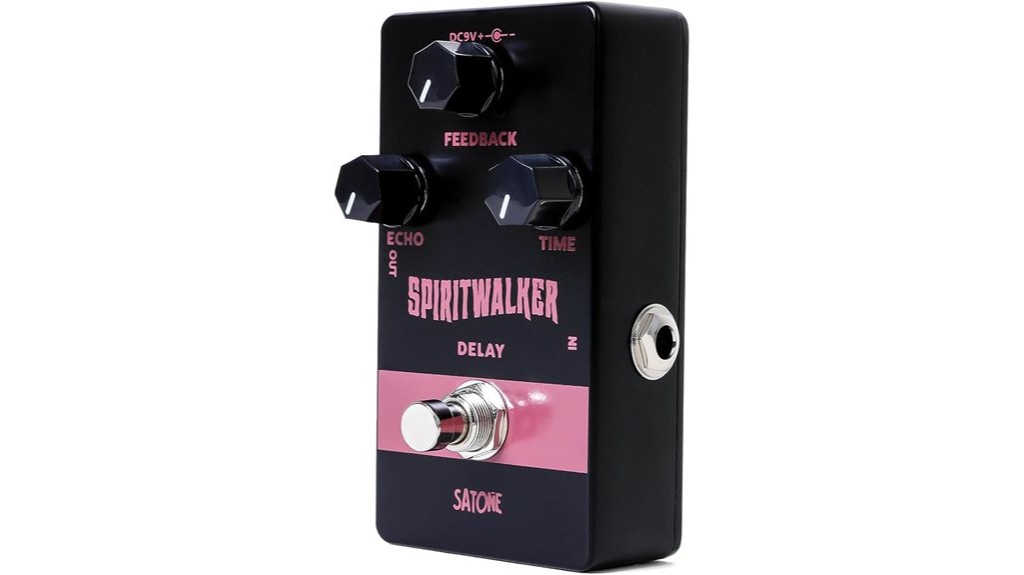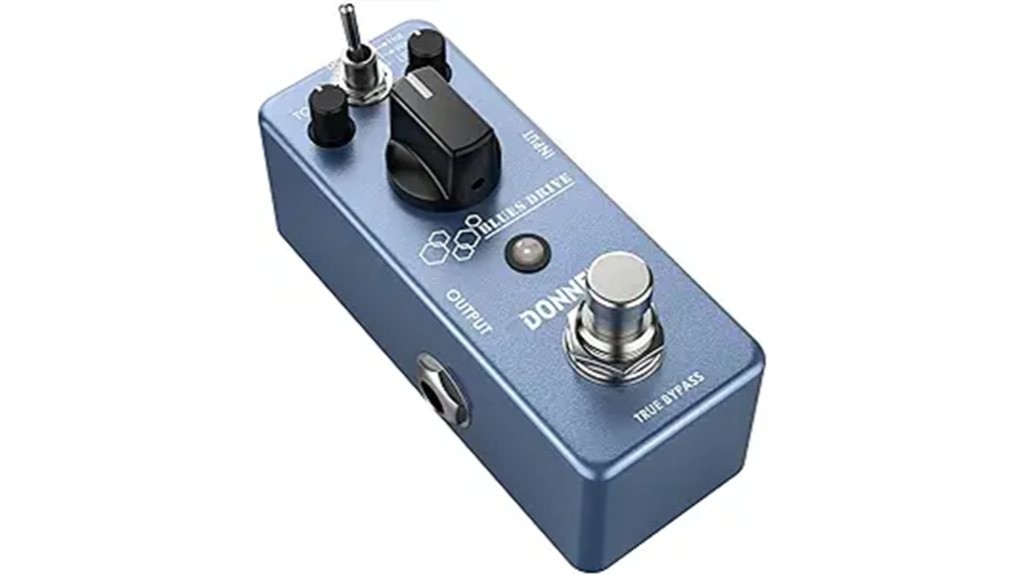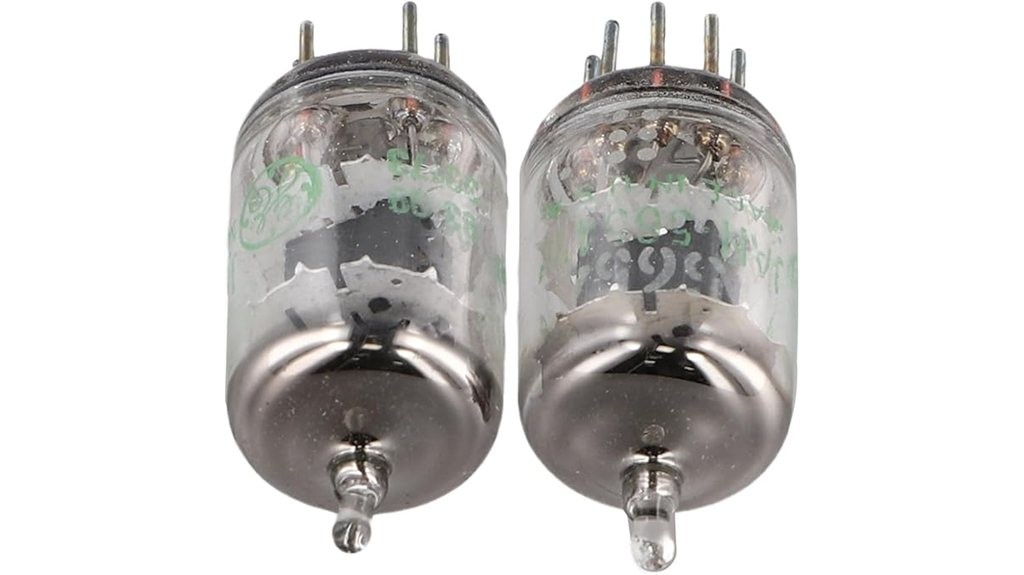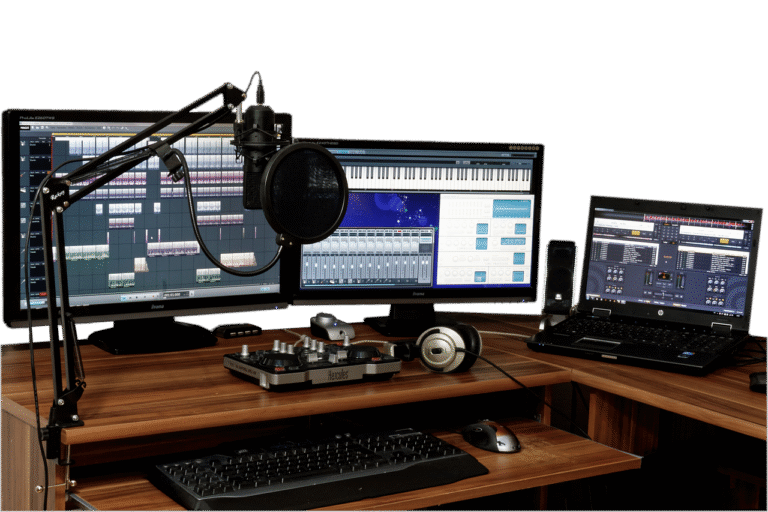This post may contain affiliate links, and we may receive commission if you purchase any of the products listed below.
If you’re looking to capture that timeless vintage guitar tone, understanding the right tubes to use is essential. As a musician, you’ll want to explore the specific qualities that different tubes bring to your sound. From rich mids to dynamic range, the right tube can transform your music. Curious about which tubes can elevate your performance and bring out that classic vibe? Let’s discuss the five best options and their unique characteristics.
Fender Pure Vintage Preamp Tube Shield, 2 Pack
If you’re looking to restore or upgrade your vintage guitar setup, the Fender Pure Vintage Preamp Tube Shield, 2 Pack is an excellent choice. These stainless steel shields are designed to dissipate heat and prevent frequency interference, ensuring your sound remains pure. With a secure twist-on design, they fit most Fender tube amps and nine-pin preamp tubes like 12AX7, 12AY7, and 12AT7. Part of Fender’s Pure Vintage electronics line, these shields replicate original-era parts, making them perfect for authentic restoration. Weighing just 2.4 ounces, they receive rave reviews for fit and functionality, with a 4.6-star rating from satisfied users.
Best For: Vintage guitar enthusiasts and musicians looking to restore or upgrade their Fender amplifiers with authentic, original-era parts.
Pros:
- Designed to replicate original-era Fender parts for authentic restoration.
- Twist-on design ensures a secure fit on most Fender tube amps.
- Highly rated for perfect fit and functionality by users.
Cons:
- Limited to nine-pin preamp tubes, may not fit other types.
- Primarily designed for Fender amps, compatibility with other brands is not guaranteed.
- May not suit users looking for more modern or advanced shielding solutions.
Check Price on Amazon
Satone Spritwalker Electric Guitar Delay Pedal (DC 9V)
The Satone Spritwalker Electric Guitar Delay Pedal (DC 9V) stands out as an excellent choice for guitarists looking to capture vintage tones with a modern twist. It’s a high-performance analog delay pedal that delivers warm, tape-like echoes, enhancing your sound with rich, organic repeats. You’ll love its compact design and true bypass feature, keeping your original tone intact. With intuitive knobs for Feedback, Echo, and Time, you’ve got precise control over your sound. While it requires a 9V DC power supply, it’s a great value, especially for beginners seeking an affordable alternative to pricier options without compromising quality.
Best For: Guitarists seeking an affordable, high-quality analog delay pedal with vintage tones and modern features.
Pros:
- High-performance analog delay with warm, tape-like echoes.
- Compact, sturdy design perfect for travel and saving pedalboard space.
- True bypass feature preserves original tone when disengaged.
Cons:
- Requires a 9V DC power supply, which is not included.
- Some users report noise issues, depending on the setup.
- Specific models may not meet performance expectations, such as noise gates.
Check Price on Amazon
Overdrive Pedal with Dual Overdrive Modes for Electric Guitar
An overdrive pedal with dual overdrive modes is perfect for blues guitarists chasing that vintage tube sound. The Overdrive Pedal offers Normal and Boost modes, providing you with a dynamic range from smooth lows to searing leads. Normal mode captures the iconic TS overdrive sound, while Boost mode delivers a powerful, tight tone. With its 1/4 inch mono jack, setup is a breeze, and true bypass guarantees transparent tone enhancement. Adjust volume, tone, and gain seamlessly with flexible knobs. Compact and lightweight, this pedal integrates effortlessly into your rig, enhancing your performance and capturing that classic blues vibe.
Best For: Blues guitarists seeking a vintage tube sound with dynamic range and tone versatility.
Pros:
- Offers dual overdrive modes for a versatile sound range.
- True bypass ensures transparent tone enhancement.
- Compact and lightweight design for easy integration into any rig.
Cons:
- May not provide the desired effect for non-blues genres.
- Limited to 1/4 inch mono jack connections.
- Relatively new product with limited customer reviews.
Check Price on Amazon
Donner Overdrive Guitar Pedal for Electric Guitar
Looking to capture that classic vintage guitar sound? The Donner Overdrive Guitar Pedal might be your answer. This Blues Drive Vintage Overdrive Effect pedal offers true bypass functionality for a transparent tone. With its blue aluminum alloy body, it’s both sturdy and stylish. You’ll love the two overdrive modes: Warm replicates the classic TS sound, while Hot delivers a more powerful and louder tone. Control your sound with LEVEL, TONE, and GAIN knobs. Although it requires a DC 9V adapter, it’s a small price for achieving that vintage tube overdrive sound. Rated 4.4 stars, it’s a favorite among musicians.
Best For: Musicians looking to achieve a classic vintage tube overdrive sound with flexible tone control in a compact and stylish pedal.
Pros:
- True bypass functionality ensures a transparent tone.
- Two overdrive modes provide versatility in sound.
- Compact and sturdy aluminum alloy body.
Cons:
- Requires a separate DC 9V adapter, which is not included.
- Limited to analog signal format.
- May not suit those seeking a digital or more modern overdrive sound.
Check Price on Amazon
5654W Vacuum Tube 2PCS for Audio Equipment Replacement
For those seeking to capture the classic vintage guitar sound, the 4W Vacuum Tube 2PCS stands out as an exceptional choice. With its 1960s design, this 5654W model brings a transparent, smooth sound that’s perfect for audiophiles. It offers thin, beautiful highs, magnetic mids, and deep, soft lows, enhancing your listening experience. Compatible with various audio devices, it replaces 6J1, EF95, and 6AK5 tubes, among others. This rare tube, packaged brand new, even outperforms many used options. Manufactured by Vasiumic, it’s a versatile upgrade for anyone looking to refine their audio equipment’s performance, delivering that sought-after vintage sound.
Best For: Audiophiles and vintage sound enthusiasts looking to enhance their audio equipment with a 1960s design vacuum tube that offers transparent and smooth sound.
Pros:
- Excellent high and low frequency response for a superior listening experience.
- Highly versatile, replacing multiple tube models and seamlessly integrating with various audio devices.
- Brand new and highly sought-after, outperforming many used alternatives.
Cons:
- May not be suitable for those seeking modern or digital sound profiles.
- Limited availability due to its rarity and high demand.
- Potential difficulty in sourcing replacements quickly due to its vintage nature.
Check Price on Amazon
Factors to Consider When Choosing Tubes for a Vintage Guitar Sound
When you’re selecting tubes for that perfect vintage guitar sound, you’ll want to take into account several key factors. Make certain the tubes are compatible with your amp, since mismatched components can affect performance. You should also weigh sound signature preferences, heat dissipation, frequency response, and the material quality to guarantee you get the best tone possible.
Tube Compatibility Essentials
Achieving that coveted vintage guitar sound involves more than just selecting any tube off the shelf; compatibility is key. Start by making sure the tube matches your amplifier’s pin configuration and electrical specifications. Common preamp tubes like the 12AX7, 12AY7, and 12AT7 are popular choices for capturing that vintage vibe and fit well in many tube amps. Remember, the type of tube—whether preamp or power—plays a vital role. Preamp tubes primarily shape your signal, while power tubes handle amplification. Vintage tubes often offer unique tonal qualities, thanks to their original design and manufacturing. Consider the tube’s dynamic range and response to confirm it suits your musical style. Different tubes can markedly affect your tone and sustain, so choose wisely.
Sound Signature Preferences
Once you’ve confirmed compatibility, it’s time to explore how different tubes can shape your sound signature. The sound signature of vacuum tubes greatly impacts the tonal characteristics of your vintage guitar. Consider tubes like the 5654W, known for their transparent and smooth sound, enhancing both high and low frequencies. This tube can elevate your vintage tones, offering warmth, clarity, and dynamic range. Vintage tubes often deliver softer, more musical qualities, perfect for achieving those “thin, beautiful highs” and “magnetic mids.” Your tube choice also affects overdrive characteristics, essential for replicating the iconic sounds beloved in blues and rock. The right tubes offer dynamic range and tonal versatility, allowing you to glide from smooth lows to searing leads seamlessly.
Heat Dissipation Importance
Heat management is a critical factor that can make or break the quality of your vintage guitar sound. Too much heat in preamp tubes can degrade tone and cause early tube failure. To combat this, consider using tube shields with spring-loaded mechanisms. They effectively dissipate heat and prevent frequency interference, boosting your guitar’s performance. Stainless steel shields are particularly good, as they manage heat well and are durable, extending tube life. Maintaining peak operating temperatures is essential for capturing those classic sound characteristics you crave. Ignore heat management, and you risk sound degradation, which is why it is important to look for tubes with strong heat dissipation features. This consideration guarantees your vintage setup delivers the sound quality you need.
Frequency Response Range
When selecting tubes for a vintage guitar sound, understanding the frequency response range is vital. Tubes with a broad range offer a balanced mix of clarity and warmth, essential for that classic tone. High frequencies provide articulation, while low frequencies add depth, creating a dynamic, full-bodied sound. Vintage-style tubes, like those from the 1960s, are famous for delivering thin, beautiful highs and deep, soft lows, enhancing your guitar’s tonal palette. It’s important to match the tube’s frequency response to your musical genre. Different styles need specific tonal qualities, so choosing the right tube guarantees the sound you’re aiming for. A wide frequency response range lets your instrument shine, bringing out the best in your vintage guitar sound.
Material and Build Quality
As you explore the world of vintage guitar sound, the material and build quality of vacuum tubes become significant factors to evaluate. Materials like glass and stainless steel are vital for durability and heat dissipation, directly impacting sound quality and tube longevity. Aim for tubes with high-quality build standards that replicate original designs, as they guarantee accurate tonal characteristics. Solid construction is important to withstand live performances and maintain sound integrity over time. Keep an eye on the weight and dimensions, as these affect compatibility with your equipment and heat management, essential for peak sound. Well-manufactured tubes offer enhanced frequency response, providing a rich, nuanced audio experience that captures the essence of vintage tones you’re after.
Vintage Design Influence
Moving from the significance of material and build quality, another key aspect in achieving a vintage guitar sound is the vintage design influence of tubes. Vintage tube designs like the 5654W are prized for their soft and loud sound characteristics, delivering the warm, rich tones musicians crave. These tubes enhance high and low frequencies, offering a transparent, smooth audio experience perfect for classic tones. You’ll notice their magnetic mids and deep, soft lows, which contribute to a fuller sound profile typical of traditional amplifiers. Designs from the 1960s are especially sought after for their unique sound profiles. Materials like glass and specific filament designs are essential in producing authentic vintage sounds, making these tubes indispensable for vintage-style guitars and amplifiers.
Tube Replacement Options
Choosing the right replacement tubes for a vintage guitar sound requires careful consideration of several factors. To begin with, verify compatibility with your existing equipment, as many vintage amplifiers need specific tubes like 12AX7, 12AY7, or 6AK5. The material and construction, such as glass tubes, can greatly influence sound quality, offering a transparent and smooth profile. Vintage tubes from the 1960s, like the 5654W, are prized for their unique sonic traits, including rich mids and deep lows. Performance varies, with some tubes enhancing frequency response and overall listening experience, perfect for audiophiles and musicians. Finally, evaluate the dynamic range and tonal qualities, as different models can produce warmer or brighter sounds, impacting your guitar’s overall output.
Frequently Asked Questions
What Are the Differences Between NOS and Modern Production Tubes?
NOS tubes offer warmer, richer tones, while modern production tubes deliver more consistency and reliability. You’ll find NOS tubes tend to have a longer lifespan, whereas modern tubes are more readily available and often cheaper. Choose based on preference.
How Do Tube Brands Impact Vintage Guitar Sound Quality?
Tube brands considerably impact your vintage guitar sound quality. Different brands offer variations in tone, reliability, and lifespan. You’ll notice subtle differences in warmth, clarity, and gain, affecting your overall sound experience when playing your guitar.
Can Tube Amp Settings Affect the Vintage Tone?
Yes, tube amp settings can greatly affect your vintage tone. By adjusting the gain, EQ, and volume, you’ll shape the sound to your liking. Experiment with different settings to find that perfect vintage vibe you’re after.
Are There Specific Tube Combinations for Different Music Genres?
Yes, you can use specific tube combinations for different genres. For blues, try pairing 12AX7 preamp tubes with EL34 power tubes. Rock benefits from 6V6 tubes, while jazz might require 6L6 tubes for smoother tones.
How Often Should Guitar Amp Tubes Be Replaced for Optimal Sound?
You should replace your guitar amp tubes every 1-2 years for ideal sound, depending on usage frequency. If you notice a drop in tone quality or performance, don’t hesitate to change them sooner.
Conclusion
In your quest for that classic vintage guitar sound, don’t overlook the power of the right tubes. The 12AX7, 5654W, 12AY7, 12AT7, and 6V6 each bring unique qualities that enrich your music with warmth, clarity, and dynamic expression. Pair these with the right pedals and you’ll capture the essence of vintage tones in every performance. Consider these factors carefully, and you’ll be well on your way to achieving that timeless sound.
